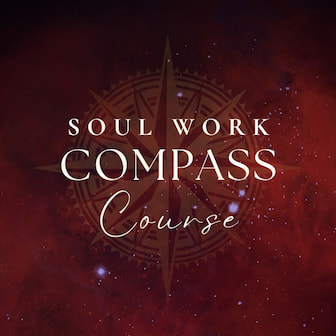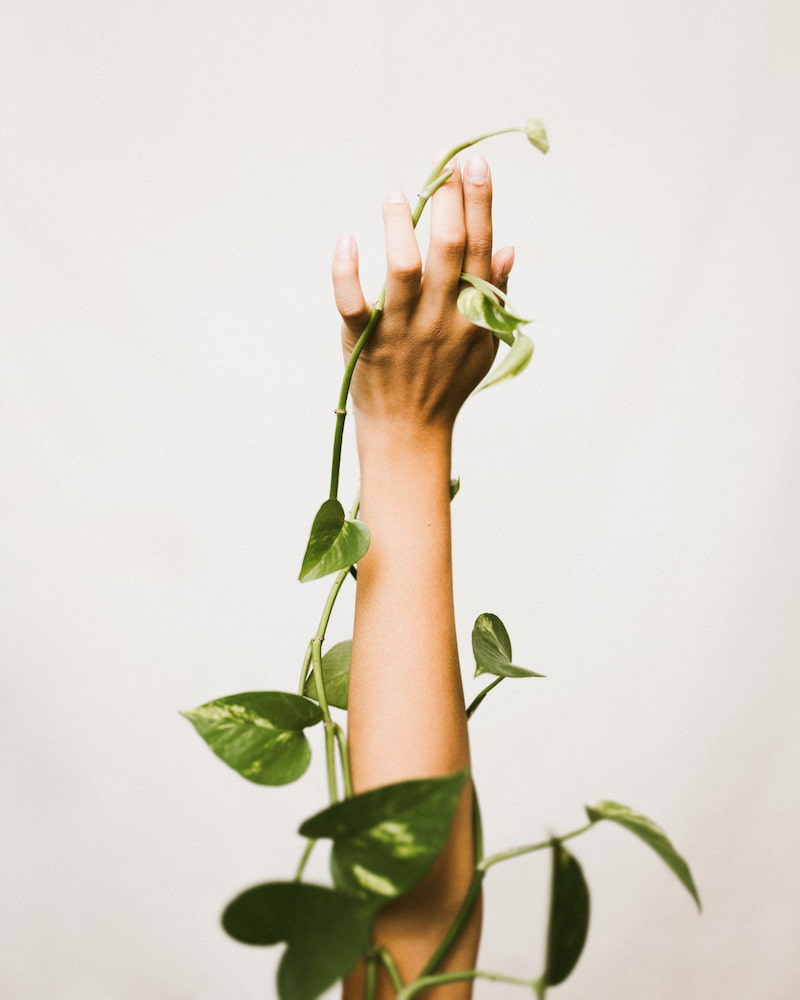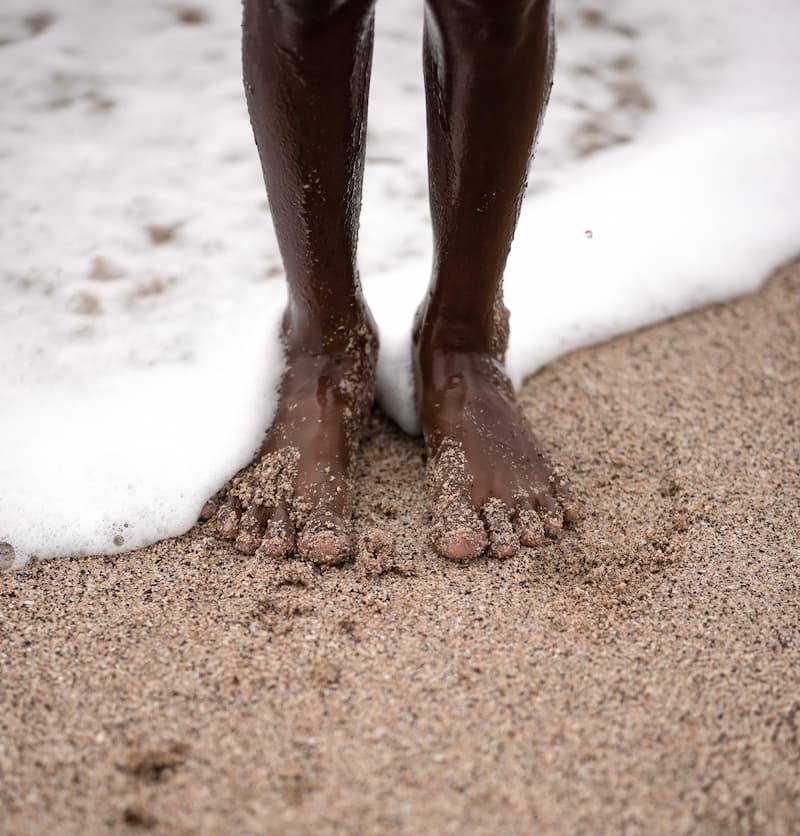For so long on my spiritual path and life journey, I focused exclusively on the mind. And yet, no matter how much talk therapy, meditation, or reading self-help books I did, many of my most fundamental issues remained untouched and unresolved.
Anxiety. Depression. Chronic Pain. IBS issues. All of these issues (and more) are not just psychological patterns but physical imprints.
The mind and body are inextricably linked.

Soul Work Compass Course:
Feeling lost or disconnected? The Soul Work Compass guides you through a 12-lesson alchemical journey to transform emptiness into clarity and deep self-insight. Create your personal compass to navigate life with clarity, freedom, and soul-aligned direction. Start your Great Work today!
Not only that, but the body is our gauge of truth, our inner oracle – and when we’re disconnected from it, we’re disconnected from our innate intuitive strengths and our primal gut instincts.
In the words of writer and therapist Stanley Keleman,
If you’re an alive body, no one
can tell you how to experience
the world. And no one can
tell you what truth is, because
you experience it for yourself.
The body does not lie.
Indeed, staying connected with our bodies is a key part of our spiritual awakening journeys of healing and expansion.
How can we grow and stay grounded in the present moment where all the magic happens when we’re walking around like dissociated blobs, cut off from the wisdom inherent in our animal bodies?
To rekindle and rediscover a connection with our bodies (that the majority of us are severely disconnected from in the modern world), various forms of somatic bodywork are available to help guide us back to deeper embodiment.
Table of contents
What is Somatic Bodywork?

Somatic bodywork is a body-centered form of therapy that:
- Explores the connection between the body and mind,
- Examines how stress and trauma are trapped within and impact the body, and
- Empowers us to find freedom from psychological, emotional, and physical distress through various body-based practices such as breathwork, yoga, and massage
Somatic bodywork empowers us to create a more mindful relationship with our bodies, release frozen emotions, and experience greater psychospiritual healing.

Shadow & Light Membership:
⭐️⭐️⭐️⭐️⭐ "Receiving these messages is a beacon of light and hope for me in currently very challenging times. The words of wisdom speak right to my soul, guiding and encouraging me further on my path. I highly recommend Shadow & Light to everyone who seeks to develop and cultivate a relationship with the Inner Self." – Karin
Somatic Bodywork is a “Bottom-Up” Approach vs. a “Top-Down” Method

In the West, most of us are used to “top-down” healing methods. “Top-down” approaches center around using the thinking brain (neocortex) to access deeper physical, mental, emotional, and even spiritual healing. We see this approach in a lot of prescribed methods of talking therapy, positive thinking, affirmations, and so on.
The “bottom-up,” on the other hand, is far less commonly used, and yet is gaining more popularity in recent years (thanks social media!), and has been proven to be equally as effective (and in some cases more suitable) than top-down methods. (1) (2)
The bottom-up method centers around connecting with the body and its various feelings and sensations to then create change in the brain. Examples of this approach include EMDR, Hakomi, Somatic Experiencing, and so on.
One way we can summarize most somatic bodywork “bottom-up” methods is as follows:
- Empowers people to befriend the feelings in their body, which enables them to relax and release stored survival stress
- Brings out any sensory information that is trapped, blocked, or frozen by trauma stored in the body
- Completes and releases the fight-flight energy that was prematurely stopped (due to various reasons like being held down, trapped, shamed into “being quiet” or a “good boy/girl” etc.) and suppressed into the freeze response through various forms of mindful movement and inward awareness.
The Need to Be Trauma-Sensitive and Gentle With Yourself

To be human is to experience trauma of some kind, so when engaging with any kind of somatic bodywork, please go slowly, practice self-love, and be gentle.
One thing I’ve learned from first-hand experience is that somatic forms of bodywork can be immensely triggering if not done carefully.
Here’s a personal example of engaging in a form of somatic spiritual practice (focusing on the breath), and how it impacted me negatively:
A few months back I went to a Buddhist meditation center where they were hosting a guided eyes-closed breathing meditation. Sounds nice, right? Except for me, this practice immediately stirred a sense of panic and paranoia. Due to my own trauma, being in an enclosed space full of people (yes, even gentle people!) triggered feelings of immense fear that jolted me into a state of fight-or-flight. And because I made myself sit through that, I went into a freeze state of dissociation that totally dysregulated my nervous system for many hours afterward.
When it comes to any form of somatic bodywork, it’s crucial to engage with it in a trauma-sensitive way because you never know what will be stirred up within you.
As our bodies literally hold onto and store our unprocessed trauma, a seemingly simple and “benign” practice might send a cascade of stress hormones running through our bodies, sending our nervous system into overdrive.
To be trauma-sensitive, it’s crucial to build up a felt sense of safety in your body before seriously engaging in any form of somatic bodywork. Most skilled bodywork therapists will help you to do this, but not all of them will (which is why it’s helpful to ask beforehand if they’re trauma-informed).
Would you like to save this?
Your information will never be shared.
Furthermore, if you’re embarking on this journey by yourself, it’s particularly important to find and create a sense of safety within your nervous system first.
To build up a felt sense of safety within your body, here are a few practices to explore:
- First, establish a connection with your body through gentle practices such as certain low-impact sports, dancing, yoga, stretching, massage, mindfulness, etc.
- Resourcing, or finding that which makes you feel safe and secure, can help you to calm down if you get activated at any time during your somatic bodywork. Examples of resources might include listening to a favorite song, drinking a hot cup of tea, attuning to nature, cuddling a pet, talking to a loved one, etc., (usually, people have many possible resources to draw on in any given moment). One of my favorite resourcing concepts is from trauma specialist Bessel Van Der Kolk who talks about “building an island of safety” in the body that is outside of the reach of the vagus nerve (that relays messages of panic to the throat, chest, and abdomen) to help stay grounded during intense feelings of fear, sadness, or distress. Building an island of safety involves finding an area of the body, a posture, or a certain movement (like wiggling the toes or pressing the hands together) that helps you to feel grounded, centered, and calm.
- Pendulation is a technique created by Somatic Experiencing founder Peter Levine to help the body deal with trauma effectively (note: this practice may require the help of a professional if you have extreme trauma). Pendulation involves swinging your awareness back and forth (like a pendulum) very gently between painful sensations (that may be related to the trauma) and pleasurable sensations and helps to bring the nervous system back into a state of balance or homeostasis
- Author and trauma professional David Treleaven writes about finding your mindful gauge (which he derived from neuroscientist Antonio Damask’s “somatic markers”). A mindful gauge – or perhaps “inner radar” – is basically some part of your physical experience that helps you to tell whether a practice is too intense for you or not. Mindful gauges anchor you to your body and help you to stay grounded and within your “window of tolerance” (the state in which you’re able to function best). One example is given by Treleaven who describes an example of a mindful gauge in his book Trauma-Sensitive Mindfulness:
In my work with Brooke, I described these domains and asked her to notice which “gauge” was strongest and most accessible to her. After some experimentation, she found that paying attention to her breath—specifically, whether it was deep or shallow—was her most powerful gauge. Brooke then began paying mindful attention to her breath throughout the day. If her husband asked whether she wanted to go for a walk, Brooke would check in with her breath. If her chest was open and she could breathe easily, it was a signal that a walk would be positive for her. If her chest constricted, she took that as a sign she needed to do something else. Working with these kinds of low-risk decisions, Brooke began to establish a sense of inner guidance that she had lost in the aftermath of her daughter’s death. Her gauge was helping her to self-regulate.
Somatic Bodywork and Spiritual Awakening

Your body is precious. It is your vehicle for awakening. Treat it with care.
– Jack Kornfield
As described at the beginning of this article, somatic bodywork (or building a kind and attentive relationship with the body) is a deeply powerful way of grounding yourself and staying embodied and rooted in the present moment.
Our bodies are temples and vessels of the Divine, and they are, in and of themselves, miraculous, highly intelligent, and wise expressions of Spirit – let’s not forget about or downplay their significance!
All of the intense symptoms we experience during kundalini awakenings, ego deaths, and other spiritual experiences ripple into the body and out into our daily lives.
Somatic bodywork can help us to decipher what’s going on, ground us into the present moment, and help us to find more equilibrium and inner peace.
7 Types of Somatic Bodywork For Psychospiritual Healing (+ Videos)

Body affects the mind. Mind affects the body. It’s an endless cycle that has massive implications for every aspect of our lives.
Below I’ll share seven somatic bodywork techniques that you might like to explore for psychospiritual healing. This is not an exhaustive list, but it does share some modalities that perhaps you weren’t aware of or would like to go into more deeply.
Please note that some of these practices might require the assistance of a trained professional. And as always, please proceed with the utmost gentleness and care, remembering what I said above about being trauma-sensitive.
1. Somatic Experiencing
The goal of Somatic Experiencing (SE), which was developed by Dr. Peter Levine, is to help people to recover from trauma by working with the nervous system which may be stuck in a state of fight, flight, or freeze.
Recommended book: Waking the Tiger: Healing Trauma by Peter A. Levine
2. Hakomi
“Hakomi” (a Hopi word meaning “who are you” and “how do you stand in relation to these many realms”) was developed by Ron Kurtz in the 1980s. It incorporates somatic experiencing, mindfulness, and Eastern concepts of non-violence.
Recommended book: Hakomi Mindfulness-Centered Somatic Psychotherapy by Weiss, Johanson, and Monda
3. Craniosacral Therapy
Craniosacral Therapy is a non-invasive form of somatic bodywork that gently manipulates the bones of the skull, spine, and sacrum to promote relaxation and healing.
Recommended book: Your Inner Physician and You: Craniosacral Therapy and Somatoemotional Release by John E. Upledger
4. Myofascial Release
Myofascial Release is a form of therapeutic massage that helps to release the tensions and constrictions trapped in the fascia or connective tissue of the body.
For over 12 years, we've poured our hearts into creating free content on this website. Unlike many platforms, we believe this guidance should be accessible to everyone. If this post empowered you in any way, please consider making a donation to keep us going. Any amount (one-time or ongoing) makes a huge difference.
Recommended book: The Trigger Point Therapy Workbook: Your Self-Treatment Guide for Pain Relief by Claire and Amber Davies
5. Feldenkrais Method
The Feldenkrais Method is an awareness-based form of somatic bodywork that helps people to learn how to move more efficiently and live with less pain and more ease.
Recommended book: Awareness Through Movement: Easy-to-Do Health Exercises to Improve Your Posture, Vision, Imagination, and Personal Awareness by Moshe Feldenkrais
6. Rolfing
Rolfing (or “Structural Integration”), uses deep pressure and mindful movement to reorganize the body’s structure and alignment in order to release tension and promote healing.
Recommended book: Rolfing: Reestablishing the Natural Alignment and Structural Integration of the Human Body for Vitality and Well-Being by Ida P. Rolf
7. TRE
TRE (or Tension and Trauma Releasing Exercises) is a bodywork technique that uses a series of exercises to release trauma stored in the body through shaking and trembling.
Recommended book: Trauma Releasing Exercises (TRE): A revolutionary new method for stress/trauma recovery by David Berceli
Some other forms of somatic bodywork that might be of interest to you include:
- Acupuncture
- Massage Therapy
- Acupressure
- Yoga
- Qi Gong/Tai Chi
- Alexander Technique
You might also like to explore my article on 7 Vagus Nerve Exercises For Nervous System Healing if you’re wanting to build more interoception (or somatic awareness).
***
Your entire life story is held within the library of your cells … Even if you have erased a biographical event from your mind – intentionally or unintentionally – your body remembers what happened.
– Steve Sisgold
Our bodies are with us 24/7 and 365 days a year – befriending your body, learning its language, and tapping into its wisdom is not just a path of wellbeing but a spiritual practice!
What does your body want you to know? What is the meaning behind your muscle tension? What insights and revelations might your organs, muscles, and fascia have to share with you?
These are questions worth reflecting on and exploring.
Tell me – do you have experience with any forms of somatic bodywork? If so, what have you learned, and what has actually worked for you? I’d love to hear in the comments!
If you need more help, we offer 2 powerful ways to guide you on your inner journey:
1. The Soul Work Compass Course: Break free from feeling lost and disconnected. The Soul Work Compass is a practical 12-step course that transforms soul loss into soul clarity. Discover your core values, heal core wounds, and create a personalized compass to guide every decision you make.
2. The Inner Work Journal Bundle: Heal at the root. This Inner Work Journal Bundle guides you through self-love, inner child healing, and shadow integration with 150+ prompts and activities. You get editable digital files to use on any device or print unlimited times. Not for lukewarm seekers, these journals are for those ready to transform.







Rolfing isn’t about deep pressure.
Rolfing, and actually in general -Structural Integration therapy – is about freeing tensions, cleaning all the things that need to be cleaned in the body, that are limiting our movement, and creating space where body is tight, a d bringing the balance in the whole body. It is a journey to finding The Line in the field of gravity – it means this feeling that we know where is up and down, our sides and front/back and we are PERFECTLY aware of our body balance. And we can use our body as the nature has created it without unnecessary effort using gravity, our bones and muscles and .. fascia.
Doing this long story shorter – this is definitelly the Journey that brings awareness and helps us heal our traumas writen in the body.
My temples have knots in them 24/7 regardless if I relax, get a nassage, etc. Which of these in your article has the best chance of working?